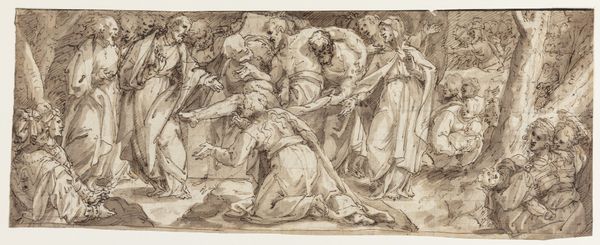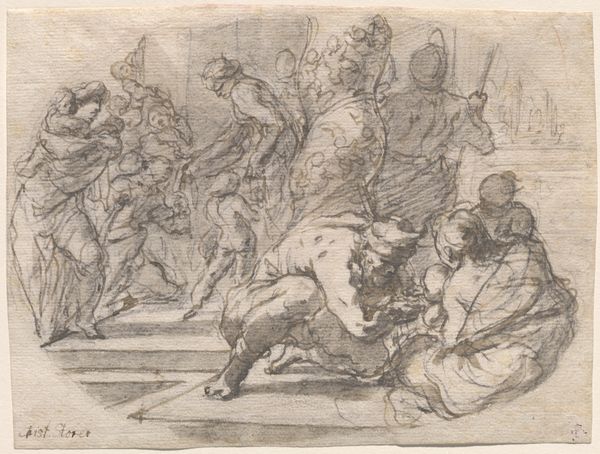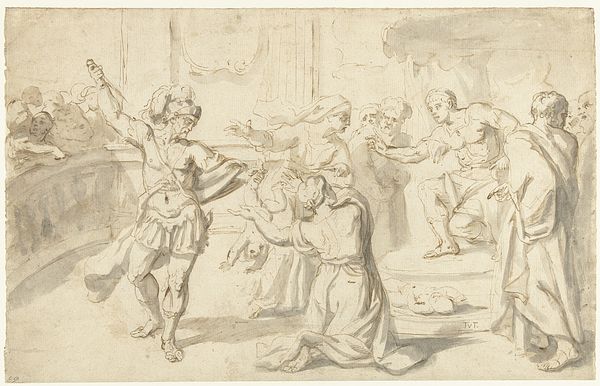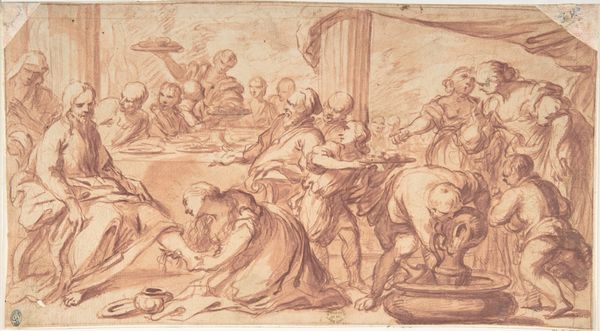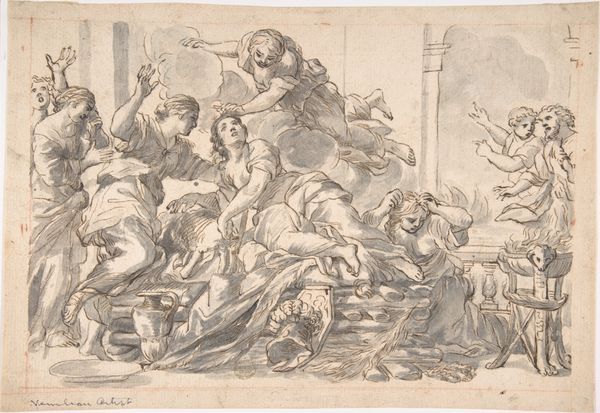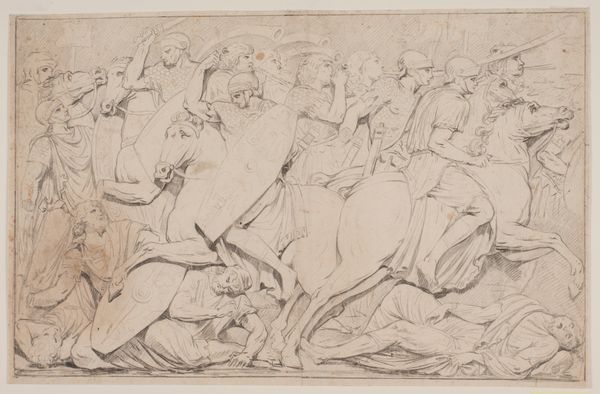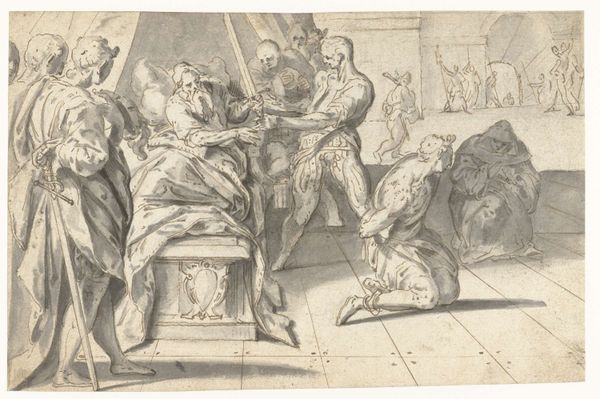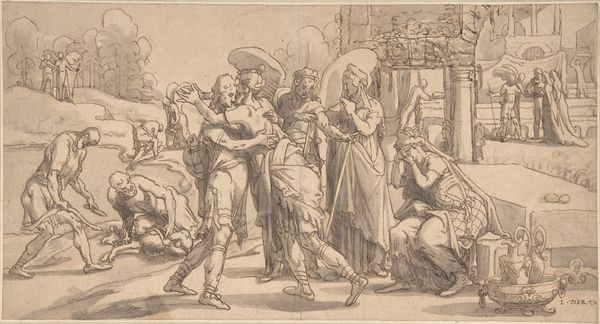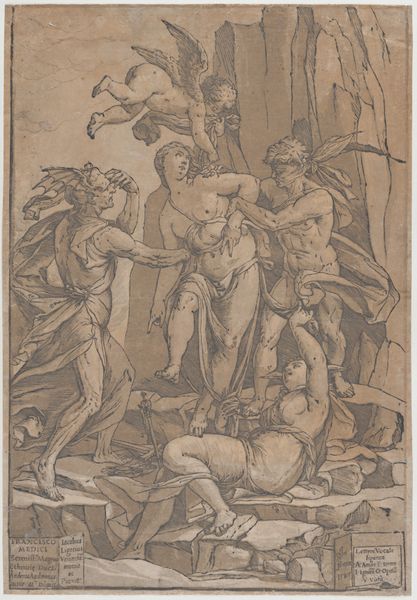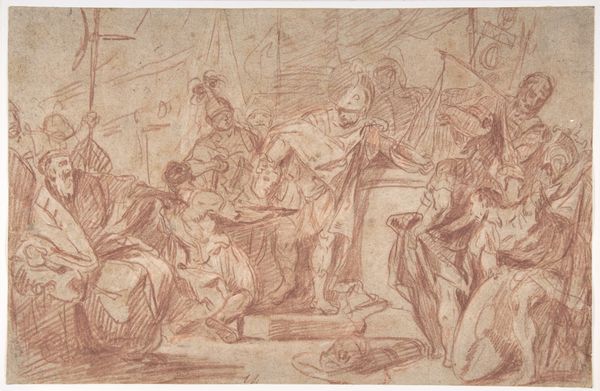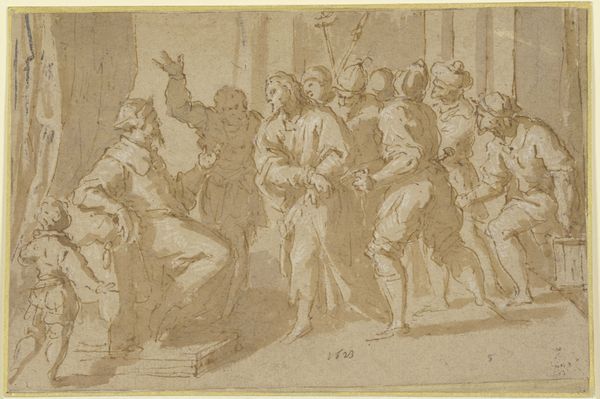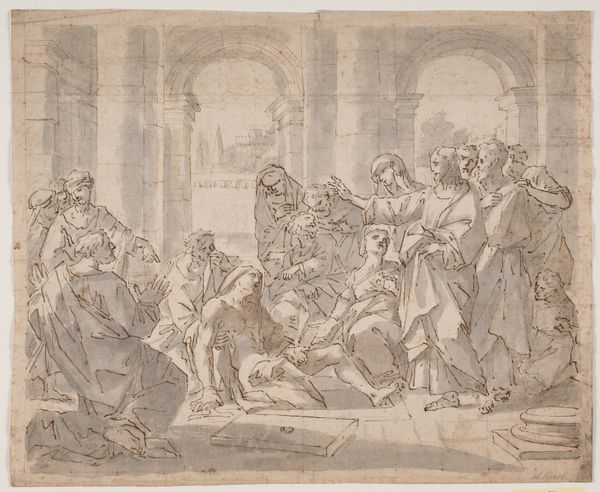
The Servants of Absalom killing Amnon (2 Samuel 13, 28-29); verso: Sketch of a seated woman 1568 - 1606
0:00
0:00
drawing, print, ink, pen
#
drawing
#
narrative-art
# print
#
figuration
#
ink
#
pencil drawing
#
pen
#
history-painting
#
northern-renaissance
Dimensions: sheet: 9 15/16 x 6 3/8 in. (25.2 x 16.2 cm)
Copyright: Public Domain
Curator: Here we have a drawing attributed to Karel van Mander I, created sometime between 1568 and 1606. It's rendered in pen and brown ink, depicting "The Servants of Absalom killing Amnon" from the Old Testament. Editor: The violence just jumps out! The frenzied poses, the sheer brutality...it’s incredibly unsettling. Curator: It certainly is. The biblical scene showcases a moment of vengeance. Amnon is being murdered by Absalom’s servants as retribution for raping Absalom’s sister, Tamar. The sketch is quite direct in showing the deed, with one figure holding a heavy jug as his murder weapon. Editor: And the jug is echoed by others with upraised fists, even that small cup looks like a deadly weapon when they are raising their arms like that. Even the expressions – some enraged, others perhaps apprehensive– it all builds toward this crescendo of fatal retribution. Look how it all focuses in on that central figure on the floor. The others might as well be stone. Curator: The history of such depictions is itself intriguing. Consider the long-standing debate about whether such narratives, even from religious texts, should be visualized and displayed so explicitly. Was this made for preparatory study, or an appeal to a certain patron? The role of this artist within a given setting seems essential to answering this question. Editor: Absolutely. It evokes echoes of classical depictions of the death of Pompey, or perhaps Laocoön being throttled by serpents—archetypes of male agony, of the mighty brought low by physical force and deceit. I wonder if viewers would have had an easy time deciphering these references when they saw this depiction. Curator: I wonder that, too. Artworks such as this draw power from those symbolic allusions, particularly within religious and historical settings. By showcasing this violence, there's potentially also the message about justice and revenge and its socio-political effect on the kingdom of David. Editor: Yes. Violence is so often loaded with complex moral questions. Examining how it appears in artworks and in various historical, cultural, and sociopolitical movements becomes critically important. It reminds us that images can be used for political effect. Curator: Indeed. A reminder of the intricate relationship between visual symbols and historical consciousness.
Comments
No comments
Be the first to comment and join the conversation on the ultimate creative platform.
